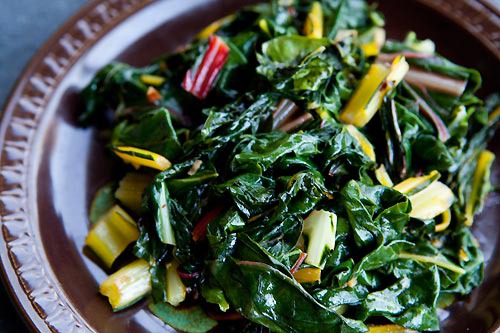The winter season brings with it a culinary conundrum. Part of you craves the comfort foods, mostly creamy and carby, that the cold weather seems to inspire. Some of this is induced by childhood memories of Mom baking bread and cooking hearty stews as chill winds blew outside.
Another part of you is facing the expanded waistline and added pounds that arrived as unwanted holiday gifts. This is the adult part, the one who dreads being mistaken for a beach ball on that vacation at Playa del Carmen.
Luckily, the combination of seasonal produce and Mexican gastronomy makes it surprisingly easy to create some comforting meals that also happen to be healthy. Eating seasonally is recommended throughout the year, but particularly in winter, when nature kindly provides us with the food we need to fight colds, flu, and the dreaded gripa, which in Mexico seems to mean either one or a combination.
Consulting my trusty Larousse de la Cocina Mexicana, which provides a seasonal produce chart, two things stand out as being in abundance during the winter months: citrus fruits and dark, leafy greens. Both of these provide essential nutrients that specifically target seasonal ills.
The colorful citrus fruits in season in Mexico now are loaded with Vitamin C, a powerful antioxidant essential for fighting colds. While this may be common knowledge, a bit of further research uncovers more benefits from eating citrus fruits.
In addition to oranges and grapefruit, both containing something called flavonone, which lowers the risk of blood clot-related stroke, the bright green limes and deep orange tangerines piled up in the markets in winter have their own unique benefits.
The ubiquitous lime, found on nearly every plate of food in Mexico, from soup to street tacos, as well as in countless beverages, acts as both a flavor enhancer and a digestive aid, combating inflammation as it lends its vibrant taste to dressings and marinades. The ultimate winter comfort food, chicken soup, is made both healthier and more flavorful with the addition of lime, in the style of the Yucatan’s famous sopa de lima.
And tangerines have some impressive qualities of their own. It turns out that nobiletin, a flavonoid found in them, helps prevent obesity as well as type 2 diabetes. Conveniently, tangerines are found in abundance during and after those food-heavy holidays. Coincidence? Or not? Either way, this is a food to enjoy right now, alone or in salads, with a flavor lift from chile, which is added to nearly all the fresh, fragrant fruit snacks sold from carts all over Mexico.
What gives citrus fruits their bright, clean scent is linalool, a naturally occurring substance found in all of them. Just peeling an orange can make a whole room smell wonderful, so it is not surprising that it adds to the aromatic appeal of the Western Mexico style pico de gallo salsa, made with oranges and their juice.
And just about all the fresh fish available in winter benefit from a quick citrus marinade or at least a good squeeze of lime. Add lime to caldo de mariscos, the Veracruz seafood soup that makes a great hangover remedy, as well as a hearty winter meal that does not rely on carbs to satisfy. Comfort without carbs? Yes, please.
Use the zest and juice of limes, oranges, grapefruit and other citrus in vinagreta de citricos, a perfect dressing for salads, especially those containing the season’s other culinary gifts, leafy greens.

Greens have been an important part of the Mexican diet since pre-Hispanic times, when everything from squash leaves and vines to wild greens were included in daily meals. Both cultivated and gathered greens add flavor and nutrition to every day Mexican food, and are used in soups, stews, enchiladas, and even tacos and tamales.
Chard, called acelgas, stands out as being one of the most easily available greens in Mexico, and the Larousse tells us, just in case we didn’t notice the mountains of chard in the mercado, that during the winter months good quality chard is abundant. This is one of the most common greens used to wrap tamales, in place of corn husks or banana leaves.
Spinach is another leafy green that is plentiful in winter and, like chard, is used to make tamales and enchiladas. In Mexico, greens are most often cooked rather than eaten raw, although in recent years, they are appearing more frequently in salads, especially on urban restaurant menus.
Spinach and chard, along with beet greens, are nutrient dense, with chard leaves containing over 13 different antioxidants. Chard also provides a flavonoid called syringic acid, which controls blood sugar by inhibiting the enzyme that turns carbs into simple sugars.
Like chard, spinach belongs to the chenopod family, a botanical group with impressive numbers of phytonutrients. And all these oxygen sensitive phytonutrients are protected by Vitamin C, which spinach provides in its vibrant green leaves. When shopping for spinach, keep in mind that the darker the leaves, the higher the Vitamin C content.
And don’t forget beet greens, called hojas de betabel. The leafy tops of the winter root vegetable is used in soups and stews in the Mexican countryside, where no self-respecting campesino would pick beets and throw away the greens. In the southern Oaxacan town of San Antonio Castillo Velasco, a salad of beet greens and oranges, dressed with lime juice and olive oil, and flavored with aniseed and garlic, is a local specialty.
Beet greens are a standout source of iron, as well as calcium and magnesium. They are rich in lutein, important to eye health, and beta-carotene, an antioxidant that the human body converts into Vitamin A. It is particularly important for healthy skin and mucous membranes, and a good nutrient in combating winter’s dry, chapped skin.
Sauté steamed chard, spinach or beet greens with onions, garlic, and chiles if desired, to make a good vegetarian filling for tacos or enchiladas. Some refried beans spread on the corn tortilla before adding the chard mixture will turn this into a well-balanced meal.
From a warming chicken soup to a pan of steaming enchiladas, there are countless winter comfort foods that can promote health and well-being if we remember to eat seasonally.
- Vinagreta de Citricos: Citrus Vinaigrette
- Sopa de Lima: Yucatan Lime Soup
- Pico de Gallo Salsa
- Sopa de Fideos con Acelgas: Swiss Chard Noodle Soup
- Enchiladas de Champiñones y Espinacas: Mushroom and Spinach Enchiladas
- Tamales de Acelgas con Salsa Verde: Swiss Chard Tamales
Published or Updated on: February 21, 2016

